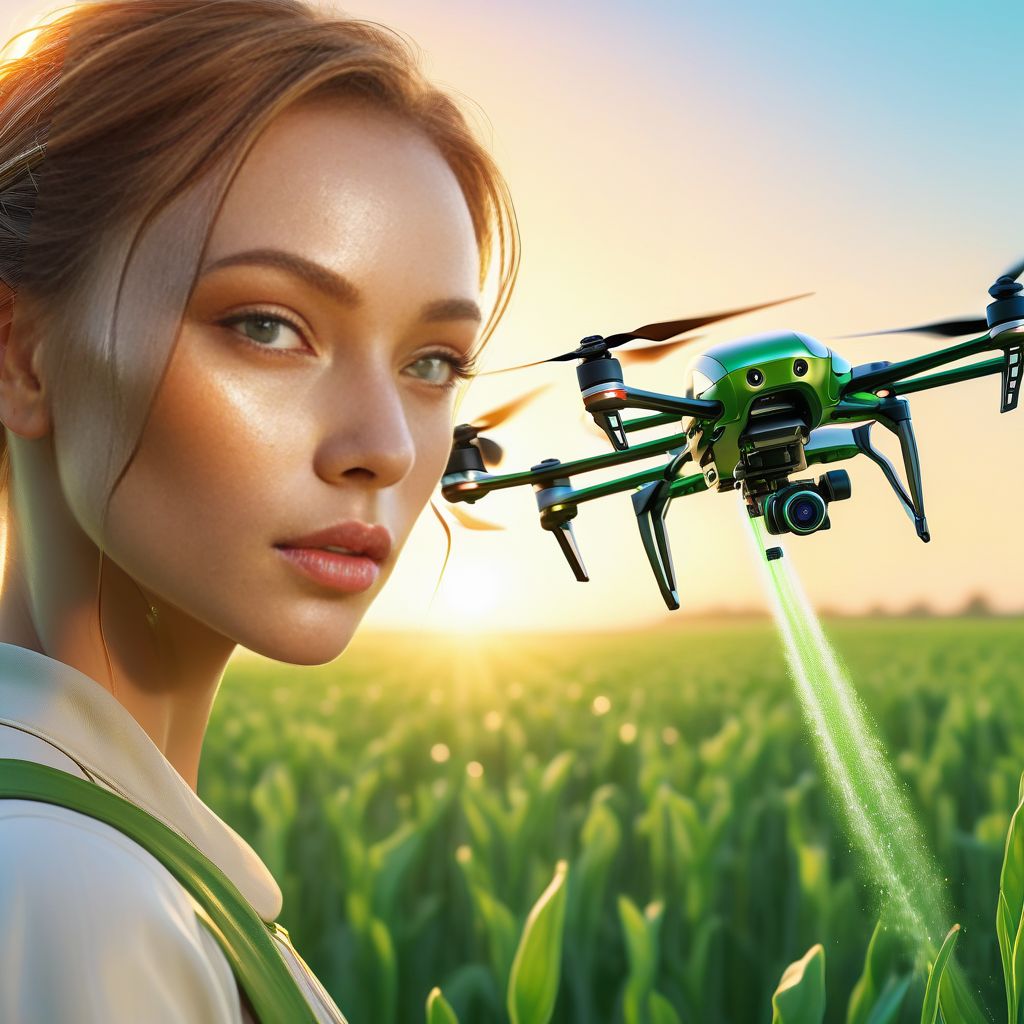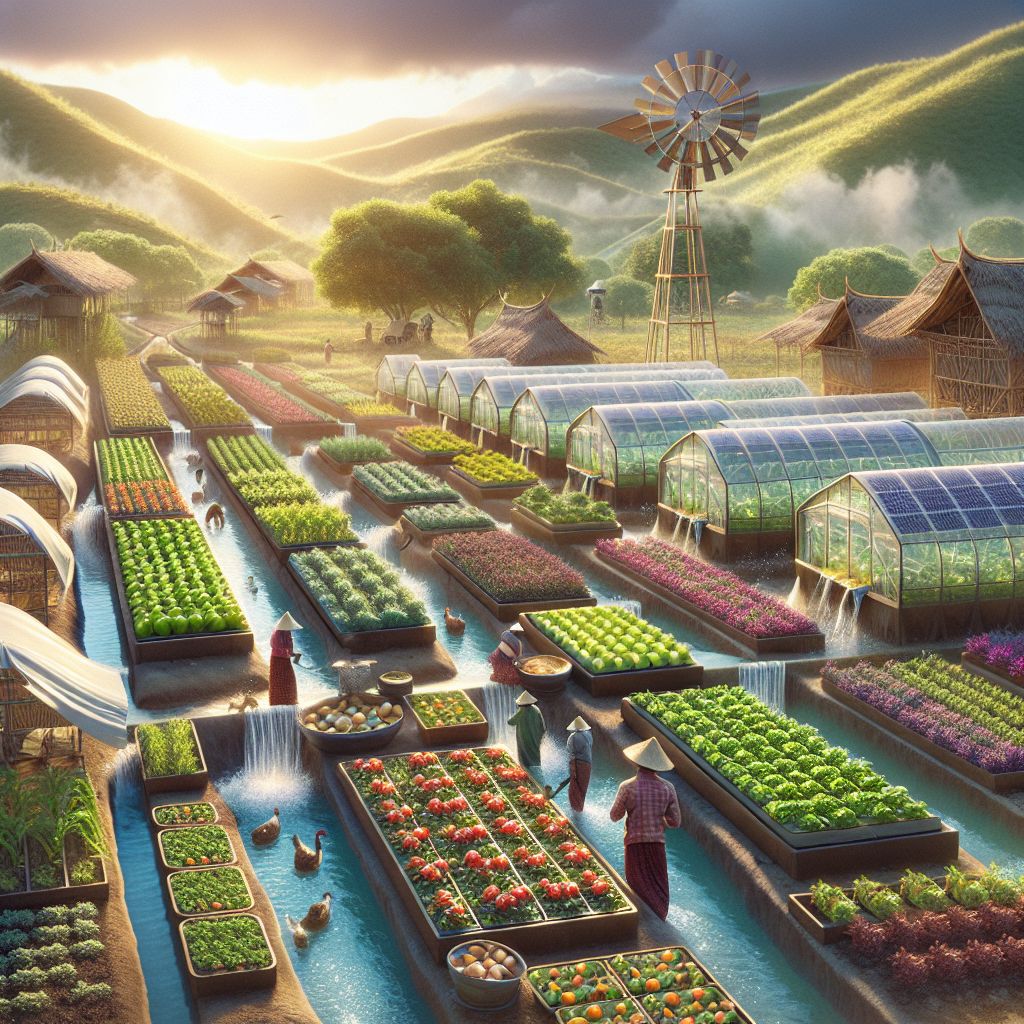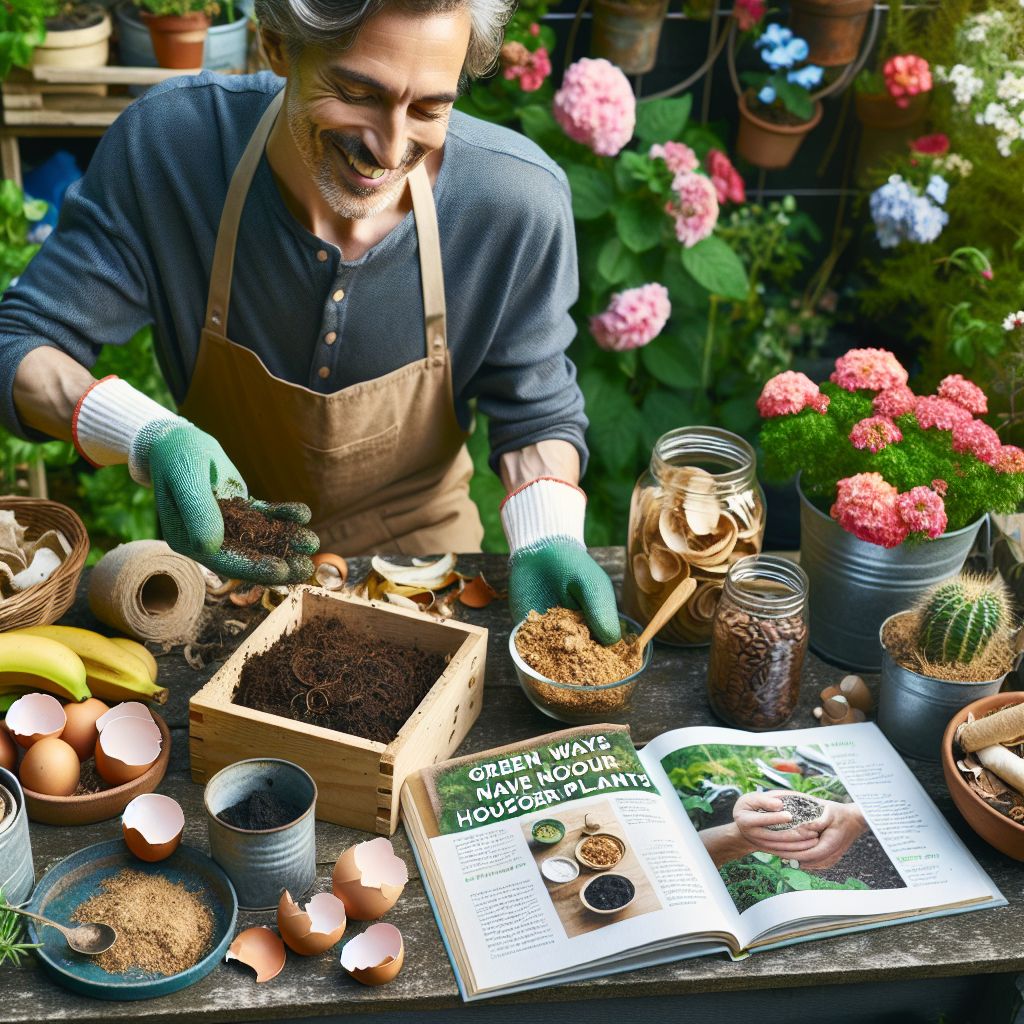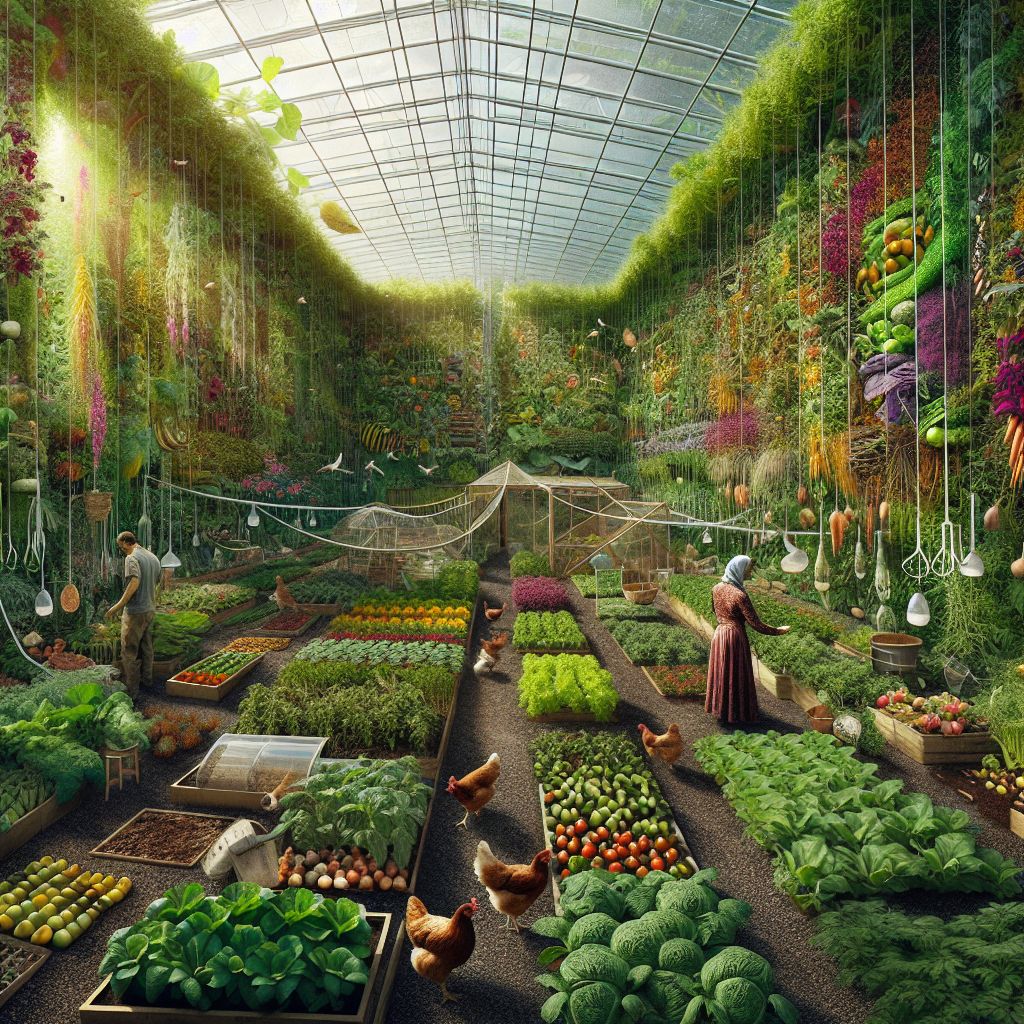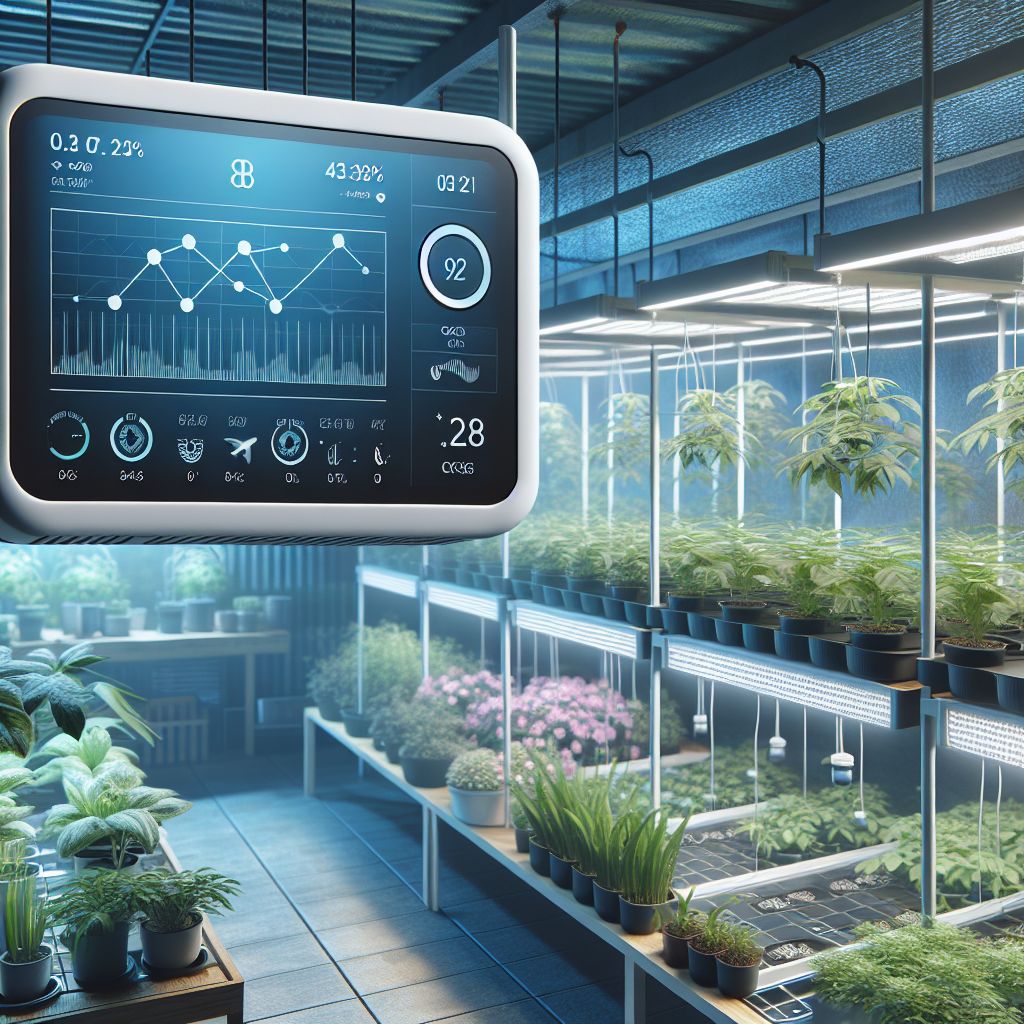Key Takeaways
- Greenhouse automation uses IoT technology to monitor and control the growing environment.
- Automated systems can regulate temperature, humidity, light, and water for optimal plant growth.
- These systems save time and resources, making farming more efficient and sustainable.
- IoT devices and sensors collect data that can be accessed remotely, providing real-time insights.
- Adopting greenhouse automation can be cost-effective and scalable, even for small farms.
Revolutionizing Agriculture with Cutting-Edge Greenhouse Automation
Greenhouse automation systems are not just a fancy addition to modern farming—they’re a game-changer. With the right setup, you can automate critical tasks like watering, climate control, and nutrient delivery. This means less manual labor, fewer errors, and more time to focus on the big picture of your farming business.
What Is Greenhouse Automation and How Does It Work?
At its core, greenhouse automation is about precision and control. Sensors placed throughout the greenhouse collect data on everything from temperature to soil moisture. This information is then used to automatically adjust the environment to the exact needs of your plants. For example, if the temperature rises too high, the system can trigger fans or shading systems to cool things down.
Core Components of an Automated Greenhouse System
- Sensors: These are the eyes and ears of your operation. They detect environmental conditions like light levels, temperature, and humidity.
- Controllers: The brain of the system, controllers process sensor data and make decisions based on pre-set parameters.
- Actuators: These are the hands that do the work—opening vents, activating lights, and turning on irrigation systems.
- Communication Network: This allows all the components to talk to each other and to you, usually via Wi-Fi or other wireless technologies.
- User Interface: This is how you interact with the system, often through a smartphone app or computer software.
Together, these components form a sophisticated network that keeps your greenhouse running smoothly, 24/7.
Now, let’s break down these components further to give you a clearer picture of how they all work together.
Sensors come in various types, each designed to measure a specific aspect of the greenhouse environment. There are temperature sensors, humidity sensors, CO2 sensors, and light sensors, just to name a few. These are strategically placed throughout the greenhouse to provide a comprehensive understanding of the conditions your plants are experiencing.
Controllers are the decision-makers that receive data from the sensors. They’re programmed with thresholds for each environmental variable. When a sensor reading crosses one of these thresholds, the controller sends a signal to the appropriate actuator to take action.
Actuators are the devices that make the physical adjustments to the environment. They can be anything from a simple solenoid valve that turns water flow on and off to a complex motorized shading system that adjusts the amount of sunlight reaching the plants.
The communication network is what ties all these components together. It ensures that the data from the sensors reaches the controllers and that the controllers can send commands to the actuators. This network needs to be reliable and secure, as it’s the backbone of your automated greenhouse.
Finally, the user interface is your window into the system. It should be intuitive and provide you with real-time data and control over the system. This way, you can make adjustments on the fly or set up automated schedules based on the specific needs of your plants.
With these components in place, you have a system that not only makes your greenhouse more productive but also turns it into a data-driven operation. This data is invaluable, as it gives you insights into the best conditions for plant growth and helps you replicate those conditions consistently.
Getting Started with IoT in Your Greenhouse
Now that you understand the basics, let’s talk about getting started. The first step is to choose the right sensors for your crops. This decision is critical because the sensors are the foundation of your entire automation system. They need to be accurate, durable, and suitable for the specific plants you’re growing.
Choosing the Right Sensors for Your Crops
When selecting sensors, consider the following:
- Type of crop: Different plants have different needs. Make sure the sensors you choose can measure the environmental factors that are most important for your crop’s health.
- Environment: If you’re in a particularly harsh climate, your sensors need to be tough enough to withstand the conditions.
- Accuracy: Look for sensors with a reputation for precision. The more accurate your data, the better you can fine-tune your environment.
Once you’ve got your sensors picked out, it’s time to think about connectivity. Your sensors need to be able to communicate with your controller, and there are a few options for this. Wi-Fi is common, but if your greenhouse is out of range, you might need to consider other options like LoRaWAN or cellular connections.
Building a Smart Network: Connectivity Options
Here are the main connectivity options:
- Wi-Fi: Great for greenhouses that are close to a reliable internet connection.
- LoRaWAN: A low-power, long-range option that’s ideal for remote or large-scale operations.
- Cellular: If you’re really off the grid, a cellular connection can keep your sensors online.
Choose the one that fits your location and budget. Remember, without a reliable network, your automation system won’t be able to function properly.
Now, let’s dive deeper into how this technology can maximize your crop yields.
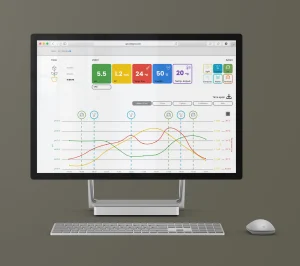
“NIDO ONE | Data monitoring, value …” from www.nidopro.com
Maximizing Crop Yields with Precision Monitoring
One of the most compelling benefits of greenhouse automation is the ability to fine-tune the conditions in which your plants grow. Precision monitoring allows you to understand and control the environment to an extent that was previously impossible. It’s like having a team of expert gardeners checking on your plants around the clock—except it’s all done by smart technology.
Regulating Climate for Optimal Growth
Plants are sensitive to their environment, and even small changes can have a big impact on their health and productivity. With an automated system, you can maintain the perfect balance of temperature and humidity that your specific crops need. For example, if you’re growing tomatoes, you’ll want to keep the air warm and the soil moist. If you’re cultivating orchids, they’ll need higher humidity and more precise temperature control.
Here’s how you can use automation to maintain these conditions:
- Temperature: Use sensors to monitor the air and soil temperature and program your system to adjust heating or cooling as needed.
- Humidity: Humidity sensors can trigger misting systems or dehumidifiers to maintain the ideal moisture level in the air.
- Ventilation: Automated vents can open or close to regulate airflow and prevent the buildup of excess heat or humidity.
By closely managing these factors, you can create an environment that encourages your plants to flourish, leading to higher yields and better quality produce.
Water Management: From Conservation to Nourishment
Water is life, especially in agriculture. But too much or too little can spell disaster for your crops. Automated irrigation systems take the guesswork out of watering. They deliver the exact amount of water your plants need, when they need it, directly to their roots. This conserves water and ensures that each plant gets the right amount of nourishment to grow.
Consider these water management strategies:
- Drip Irrigation: A system that delivers water directly to the base of each plant, reducing waste and evaporation.
- Soil Moisture Sensors: These sensors provide real-time data on the moisture level of your soil, so you can adjust irrigation schedules accordingly.
- Automated Watering Schedules: Set up your system to water at the most effective times of day, such as early morning or late evening, to minimize evaporation.
With these tools, you can be sure that every drop of water is used efficiently, which is better for your plants and the planet.
The Smart Farmer’s Toolkit
Now that you’re familiar with the components of greenhouse automation, let’s look at the software that brings it all together. This is where the magic happens—where data turns into actionable insights and automated processes.
Essential Software Platforms for Monitoring and Control
Choosing the right software platform is crucial. It’s the interface that allows you to interact with your automated system. You’ll want something user-friendly, with a clear dashboard that gives you a snapshot of your greenhouse’s status at a glance. The platform should also allow you to dig deeper into the data, analyze trends, and make adjustments to your automation settings.
Look for software that offers:
- Real-time monitoring: See what’s happening in your greenhouse at any moment.
- Data analysis: Track patterns and make informed decisions based on historical data.
- Remote control: Adjust settings from anywhere, whether you’re in the field or on vacation.
These features allow you to manage your greenhouse effectively, ensuring that your plants are always in an optimal growing environment.
Integrating Automation for Efficient Farm Management
Once you have your sensors and software in place, the next step is integration. This means ensuring all the different parts of your automated system work together seamlessly. It’s about creating a cohesive network that responds to changes in real time and keeps your plants in the best possible conditions.
Here’s how to achieve that:
- Compatibility: Make sure all your devices and software can communicate with each other.
- Scalability: Choose solutions that can grow with your business. Start small if you need to, but plan for the future.
- Support: Work with companies that offer strong customer service and technical support. You’ll want help available if you run into any issues.
With a fully integrated system, you’ll have a powerful tool at your fingertips that can transform the way you farm.
Overcoming Obstacles in Greenhouse Automation
As with any new technology, there are challenges to adopting greenhouse automation. But don’t let that deter you. Most obstacles have smart solutions if you know where to look.
Addressing Common Challenges with Smart Solutions
Some of the common challenges include the initial cost of setup, the learning curve associated with new technology, and the need for ongoing maintenance. Here’s how you can address these challenges:
- Cost: Look for modular systems that allow you to start small and add on as your budget allows.
- Learning Curve: Choose systems with excellent training resources and customer support to help you get up to speed quickly.
- Maintenance: Opt for systems with a reputation for reliability and ease of maintenance, and consider a maintenance contract to ensure ongoing support.
By tackling these challenges head-on, you can make the transition to automation smooth and successful.
Staying Ahead: Maintenance and Upgrades
Maintenance is key to keeping your automated system running smoothly. Regularly check sensors for accuracy, update software to the latest versions, and keep an eye on the physical components of your system for wear and tear.
And remember, technology is always advancing. Keep an eye on new developments that could benefit your operation and be prepared to upgrade when it makes sense. This will help you stay ahead of the curve and maintain a competitive edge.
Most importantly, don’t be afraid to ask for help. Whether it’s from the company that sold you the system, other farmers who have made the switch to automation, or online communities dedicated to smart farming, there’s a wealth of knowledge out there for you to tap into.
The Future is Green: Trends and Predictions for Smart Greenhouses
Looking ahead, the future of greenhouse automation is bright. We’re already seeing incredible innovations that are making these systems smarter, more efficient, and more accessible to farmers of all sizes.
Emerging Technologies in Agriculture
Some of the exciting trends on the horizon include:
- Artificial Intelligence: AI is beginning to play a role in analyzing data and making predictive adjustments to greenhouse conditions.
- Robotics: From automated planters to harvesters, robots are becoming more common in greenhouses, handling tasks that are labor-intensive or repetitive.
- Energy Efficiency: New technologies are making it possible to reduce the energy footprint of greenhouses, which is good for the environment and your bottom line.
As these technologies develop, they’ll become more integrated into greenhouse automation systems, further enhancing the capabilities and benefits of smart farming.
In conclusion, greenhouse automation systems represent a significant step forward for agriculture. By adopting these smart farming solutions and technologies, you can improve the efficiency, sustainability, and profitability of your operation. Remember, the key is to start small, plan for the future, and always be on the lookout for new ways to improve. The future is green, and with the right technology, it’s within your reach.
FAQ About IoT Monitoring Systems
Can Greenhouse Automation Be Cost-Effective for Small Farms?
Absolutely! While the upfront cost of setting up an automated greenhouse might seem daunting, the long-term savings can be substantial. Here’s why:
- Automation reduces labor costs by handling repetitive tasks like watering and climate control.
- It increases efficiency, meaning you get more out of every square foot of your greenhouse.
- The precision of automation can reduce waste, saving on water and nutrient costs.
- Smart systems can help prevent crop losses by maintaining optimal growing conditions.
- Over time, the increase in yield and quality can lead to higher profits.
In terms of actual numbers, it usually costs a few hundred to a few thousand dollars to set up a basic automation system, depending on the size of your greenhouse and the complexity of the technology. However, the return on investment can be seen in as little as one growing season, again depending on the scale and efficiency gains.
What Are the Best Crops for Automated Greenhouses?
While greenhouse automation can be adapted to almost any crop, the best candidates are those with high value and sensitivity to environmental conditions. These include:
- Herbs like basil and mint, which require specific humidity levels for optimal growth.
- Vegetables like tomatoes, cucumbers, and peppers that benefit from precise temperature and water control.
- Ornamental flowers such as roses and orchids, where even slight variations in climate can affect bloom quality.
- Leafy greens like lettuce and spinach, which are often grown hydroponically and thrive under consistent conditions.
Ultimately, the choice of crops will depend on your market, climate, and resources, but these examples serve as a great starting point for many automated greenhouses.
How Does IoT Contribute to Sustainable Farming Practices?
IoT is a game-changer for sustainability in agriculture. By using sensors and automation, farmers can drastically reduce resource use and waste. Here’s how:
- IoT devices provide precise data, allowing for optimal use of water and nutrients, reducing runoff and pollution.
- Automation can lead to energy savings by efficiently managing lighting, heating, and cooling systems.
- Data collected from IoT sensors can help in predicting pest and disease outbreaks, reducing the need for pesticides.
- Remote monitoring minimizes the need for farmers to use vehicles on the farm, lowering carbon emissions.
These sustainable practices not only help the environment but also improve the bottom line by reducing resource costs.
What Are the Security Concerns with IoT in Agriculture?
While IoT brings numerous benefits, it also introduces some security concerns:
- Data breaches can occur if the system is not properly secured, potentially exposing sensitive farm data.
- Unauthorized access to the automation system could lead to tampering with greenhouse conditions.
- Dependency on technology raises concerns about system failures and the need for reliable backup solutions.
To mitigate these risks, it’s crucial to implement strong cybersecurity measures, regularly update software, and ensure that you have manual override capabilities in case of system failures.
How Can Farmers Learn to Implement and Use Greenhouse Automation?
Farmers looking to implement greenhouse automation can start with these steps:
- Research and identify the most critical needs of your operation that could benefit from automation.
- Attend workshops, webinars, and agricultural tech conferences to learn about the latest in greenhouse automation.
- Consult with automation system providers for demos and training on their products.
- Start small with a pilot project to get a feel for the technology before scaling up.
- Join online forums and communities where other farmers share their experiences and advice.
Most importantly, stay curious and open to learning. The world of smart farming is constantly evolving, and there’s always something new to discover that can benefit your farm.
In the world of smart farming, greenhouse automation IoT monitoring systems represent a powerful tool for enhancing the efficiency and sustainability of agricultural operations. By leveraging the precision and control offered by IoT technology, farmers can create optimal growing conditions for their crops, leading to increased yields and reduced resource consumption. Whether you’re operating a small family farm or a large commercial greenhouse, integrating automation into your farming practices can provide significant benefits and position your business for success in the competitive agricultural market.

